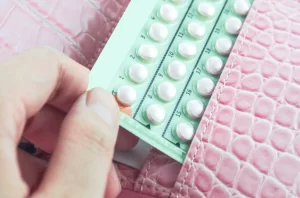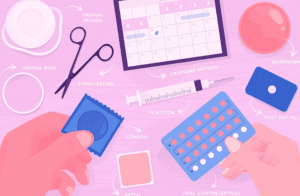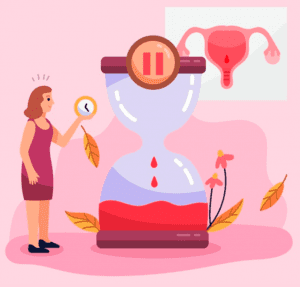Low Dose Birth Control
Vanessa Cullins, MD, obstetrician/gynecologist; vice president of external affairs, Planned Parenthood Federation of America.
Low-Dose and Ultra-Low-Dose Birth Control Pills
You probably know that the pill has hormones in it to keep you from getting pregnant. Most versions have a combination of estrogen and progesterone. Some have more estrogen in them than others. While fewer hormones sounds like a good thing — and it mostly is — you should know the drawbacks when you’re weighing your choices.
What’s Low?
Birth control pills (also called oral contraceptives) work well. The catch is that the more estrogen you take, the more likely you are to have side effects such as headaches, nausea, breast tenderness, and rare but potentially fatal blood clots.
When the pill first came out in the 1960s, it had 150 micrograms of estrogen. Side effects were common, and that formula was soon taken off the market. Nowadays, the highest dose available is 50 micrograms of estrogen, but even that is rarely prescribed anymore.
Low-Dose Pill Options
Today, most pills have 35 micrograms or less of estrogen, an amount that’s generally called “low dose.” These pills are both safe and effective for most women. But some people shouldn’t use them, so you should talk with your doctor about your health and habits (such as smoking).
Some examples of low-dose pills are:
- Drospirenone and ethinyl estradiol (Yasmin)
- Levonorgestrel and ethinyl estradiol (Levora)
- Norethindrone and ethinyl estradiol (Estrostep or Ortho-Novum)
- Norgestimate and ethinyl estradiol (Ortho-Tri-Cyclen Lo)
- Norgestrel and ethinyl estradiol (Lo/Ovral-28)
Ultra-Low Dose Choices
In recent years there’s been a trend toward even lower levels of hormones. “Ultra-low-dose” pills have 20 micrograms of estrogen or less. Some examples are:
- Desogestrel/ethinyl estradiol and ethinyl estradiol (Mircette)
- Drospirenone and ethinyl estradiol (Yaz)
- Levonorgestrel and ethinyl estradiol (Alesse)
- Norethindrone and ethinyl estradiol (Lo Loestrin Fe)
Ultra-low-dose pills seem to be just as good at preventing pregnancy as higher dose options. They also come with a lower risk of side effects such as headaches and fluid retention.
They tend to work especially well in perimenopausal women. These are women who are still getting periods but are having menopausal symptoms like hot flashes and irregular periods.
Side Effects
Ultra-low-dose pills can cause side effects, too. Many women who take them have breakthrough bleeding, which can lead women to stop taking them. Taking your pill at exactly the same time every day may help reduce this problem, but there are no guarantees.
Another issue is that women who take ultra-low-dose pills may get vaginal dryness and chronic pelvic pain. Those can make sex uncomfortable.
Other Possible Benefits of Birth Control
Birth control pills have benefits besides contraception. They lower your risk of ovarian and endometrial cancer and can help with acne. But it’s not clear if ultra-low-dose formulas do as good a job of providing these perks.
Birth control isn’t one-size-fits-all, so you should weigh the pros and cons of going extra-low with your doctor.
Show Sources
Aponte, M. American Urological Association 2013 Annual Scientific Meeting: Abstract 1515. Presented May 2013.
Association of Reproductive Health Professionals: “Choosing a Birth Control Method: Combined Oral Contraceptive Pills.”
Cianci, A. Minerva Ginecologica, August 2007.
Cleveland Clinic Center for Continuing Education: “Female Contraception.”
International Pelvic Pain Society: “Do Oral Contraceptive Pills Cause Vulvodynia? Time to Finally End the Controversy.”
Kripke, C. American Family Physician, October 2005.
Liao, P.V. Canadian Family Physician, December 2012.
Mary Jane Minkin, MD, clinical professor, obstetrics, gynecology, and reproductive sciences, Yale School of Medicine.
Planned Parenthood: “Birth Control Pills.”
Vanessa Cullins, MD, obstetrician/gynecologist; vice president of external affairs, Planned Parenthood Federation of America.
Womenshealth.gov: “Menopause Symptom Relief and Treatments.”
Low Dose Birth Control
![]()
When people talk about the “dose” of birth control, they mean the amount of hormones or active ingredients it has. Back in the day, “low dose” birth control had a higher amount of hormones (50 to 110 micrograms of estrogen!). That said, if you’re asking specifically for low-dose birth control, you should know that most pills today are considered low-dose.
Being that there are so many birth control options to choose from, it’s normal to feel confused or even overwhelmed. But have no fear. The following article will explore the pros and cons of low dose birth control.

What is considered low dose birth control?
Most pills prescribed today have around 30-35 micrograms of hormones. Any pill that has less than 30 micrograms (i.e. 10-20 micrograms) is considered low dose. At Pandia Health, we do not recommend these pills for individuals under the age of 30, as they can have a negative impact on bone density .
The hormone estrogen helps during the process of gaining bone density by inhibiting bone resorption (i.e. removal of old bone). According to a study published by the National Library of Medicine , young adult females who used birth control pills with estrogen levels below 30 micrograms had lower bone mass density around the spine. Similarly, a study conducted by the Group Health Research Institute found that women under 30 who took lower-dose birth control experienced smaller gains in bond density compared to those who took a dose above 30 micrograms. While it’s impossible to develop conclusions based on small-scale results, low dose birth control should still be prescribed with caution to ensure healthy bone density.
Who gets low dose birth control?
While low dose birth control is typically not recommended to women under the age of 30, it may be prescribed in some specific cases . For instance, this option might be necessary for women who are intolerant to high doses of estrogen, but still want to take hormonal birth control. Additionally, those who weigh less than 100 pounds or who have experienced nausea and/or headaches when taking the regular pill could benefit from trying a lower dose method.
Tldr: Adolescent medicine , bone, and pediatric gynecology specialists at Stanford Medical School agree that if you are under 30 years old, you should take a birth control pill that has at least 30 micrograms of estrogen. Any pill with fewer micrograms could have negative impacts on bone density.

Low-dose birth control vs. other hormonal contraceptives?
Birth control products are generally considered safe for people with uteri. Fortunately, there are several different types of hormonal and non-hormonal contraceptives individuals can try:
- The patch – a patch that contains estrogen and progestin and is worn on the skin; replaced every week for three weeks, followed by a patch-free week
- The vaginal ring – a small, flexible ring that contains estrogen and progestin and is placed in the vagina; replaced every three to five weeks
- The shot – a shot of progestin that is administered once every 12 weeks
- Hormonal IUD – a small device that contains progestin and is placed in the uterus by a doctor; can last for up to five years
- The implant – a small rod implanted that contains progestin and is placed just under the skin in one arm; can last for up to five years
Every person’s body is different and thus, may react differently to birth control. It may take some trial and error to find the method that best meets your health needs and lifestyle habits.
How does the birth control pill work?
Before one can fully appreciate what makes low-dose contraceptives different than other forms of birth control, it’s crucial to understand how the birth control pill works. The female reproductive system operates under a cycle of rising and falling estrogen, progesterone, and androgen hormones. At the beginning of the cycle, hormones steadily increase until the ovary is prompted to release an egg. Once this happens, hormones influence the uterus to grow an endometrial lining in preparation for a fertilized egg. If an egg is not fertilized within about 10 to 14 days after ovulation, the endometrium sheds, resulting in a menstrual period.
The pill disrupts the rising and falling of reproductive hormones by a steady dose of synthetic estrogen and progesterone. The endometrium is not signaled to grow to prepare a fertilized egg, and when women who take the pill have a menstrual period, it’s not really a period because ovulation did not occur. Monthly bleeding on the pill is referred to as withdrawal bleeding.
Naturally occurring estrogen in the female reproductive cycle is produced in the ovaries. Estrogen helps the uterus grow the lining that is responsible for the implantation of a fertilized egg.
Birth control history
When the pill was first introduced, it contained around 100 micrograms of synthetic estrogen, called ethinyl estradiol; this level of estrogen has since decreased. High doses of synthetic estrogen can cause many side effects, including a significantly increased risk of blood clot formation and other issues.
Most birth control pills that exist now in 2021 contain a mix of synthetic estrogens and progesterone hormones. Some higher dose pills on the market even contain approximately 50 micrograms of estrogen while lower dose pills, like Lo Loestrin Fe , have only 10 micrograms of synthetic estrogen.
While there is still a risk of blood clots when taking combination birth control pills, the risk is substantially lower with pills that contain 30 micrograms of estrogen or lower.

Hormone dose in other forms of birth control
Today, most birth control pills are considered low doses, whether they contain a combination of synthetic estrogen and progesterone or just progesterone. The ring and patch contain similar amounts of estrogen as low-dose combination pills.
The Ring
The one-month vaginal contraceptive ring (such as Nuvaring or EluRyng) releases 15 mcg of Ethinyl estradiol per day, which is equivalent to about 20 mcg of estrogen in the blood. In a 2005 study researchers found that women who used the ring had little to no difference in their bone density after two years.
Annovera, another type of ring, releases 13 mcg of ethinyl estradiol per day , which is one of the lowest doses in birth control. This could have a negative impact on bone density for individuals under the age of 30.
The Patch
The birt h control patch delivers 20 micrograms of synthetic estrogen every day for seven days before the patch is changed. However, the body absorbs a higher dose of estrogen from the patch compared to the pill because the hormones are absorbed directly into the bloodstream and able to bypass the liver’s filtering functions. Therefore, women who have increased risk factors for blood clots should not use the birth control patch.
Are low-dose birth control pills still effective?
Combination birth control pills
With typical use, low-dose birth control pills are 92% effective at preventing unintended pregnancy. These can be taken as generic or name brand pills. Both types have the same amount of effectiveness. The most popular brand name, low-dose combination pills include Yaz , Ortho-Novum , Aviane , Apri , Yasmin , and Levlen .
In most cases, women will take 21 days of active pills followed by a seven-day break where only placebo pills are taken. It is during this break that a withdrawal bleed will occur. However, it is safe for women to take the active pills continuously to prevent this bleed.
Progesterone-Only Pills
Low-dose progesterone-only pills (a.k.a minipills) are also 92% effective with typical use. Brand names of synthetic progesterone-only pills include Camila , Micron o r , Heather , Errin , Ovrette , Nor-QD .
Each minipill pack contains 28 active pills. It is critical for women who are on this type of birth control to take it at the exact same time every day in order to ensure its effectiveness. Combination pills give women slightly more leeway as far as timing in which they can be taken.
Who is the minipill for?
Doctors often prescribe the minipill for women who are breastfeeding or are in perimenopause ; it is also safe for women who cannot tolerate synthetic estrogens. In addition, women who are over 35, who smoke , or who have a family or personal history of blood clots should steer clear of synthetic estrogens. The minipill may be safe for women with these risk factors to use as pregnancy prevention.
How can Pandia Health help?
Choosing the right birth control can be challenging, especially with so many options available. Pandia Health can take a HUGE chunk of your stress away. If you live in AZ, CA, CO, FL, GA, IL, MI, NV, TX, TN, PA, WA, or WY, sign up for online consultation with one of our expert doctors – they can help you find a prescription that best fits your health and lifestyle needs.
Already have a prescription you love? No problem! Sign up for our FREE delivery service to get your pill packs shipped directly to your mailbox. We deliver to all 50 states. With Pandia Health, you can #SkipTheTrip to the pharmacy and feel confident that you will never run out of birth control.

Frequently Asked Questions
Does birth control work?
All forms of birth control “work” to prevent pregnancy, but their effectiveness varies by type and how well the individual is using it. Some of the more popular birth control methods like the pill, patch, and ring (with perfect use) are 99% effective. It should be noted that only external barrier forms of birth control (i.e. condoms) prevent STIs. Furthermore, using both a hormonal birth control and an external barrier is necessary for prevention of pregnancy and STIs.
How effective are birth control pills?
Combination birth control pills (those containing both estrogen and progestin) are 99% effective with perfect use and 91% effective with typical use. The minipill (contains only progestin) is also 99% effective with perfect use and 93% effective with typical use.
What is lo loestrin fe?
Lo Loestrin Fe is a type of birth control pill that is considered “low dose”, as it only contains 10 micrograms of estrogen. In addition to preventing pregnancy, this pill may also help treat acne, reduce the risk of ovarian cysts, and reduce period symptoms. With that being said, because it is low dose and could potentially have adverse effects on bone health, it should ideally only be recommended for women over the age of 30.
Disclaimer: The above information is for general informational purposes only and is NOT a substitute for professional medical advice. Always seek the advice of your doctor or healthcare provider before starting or changing treatment.






